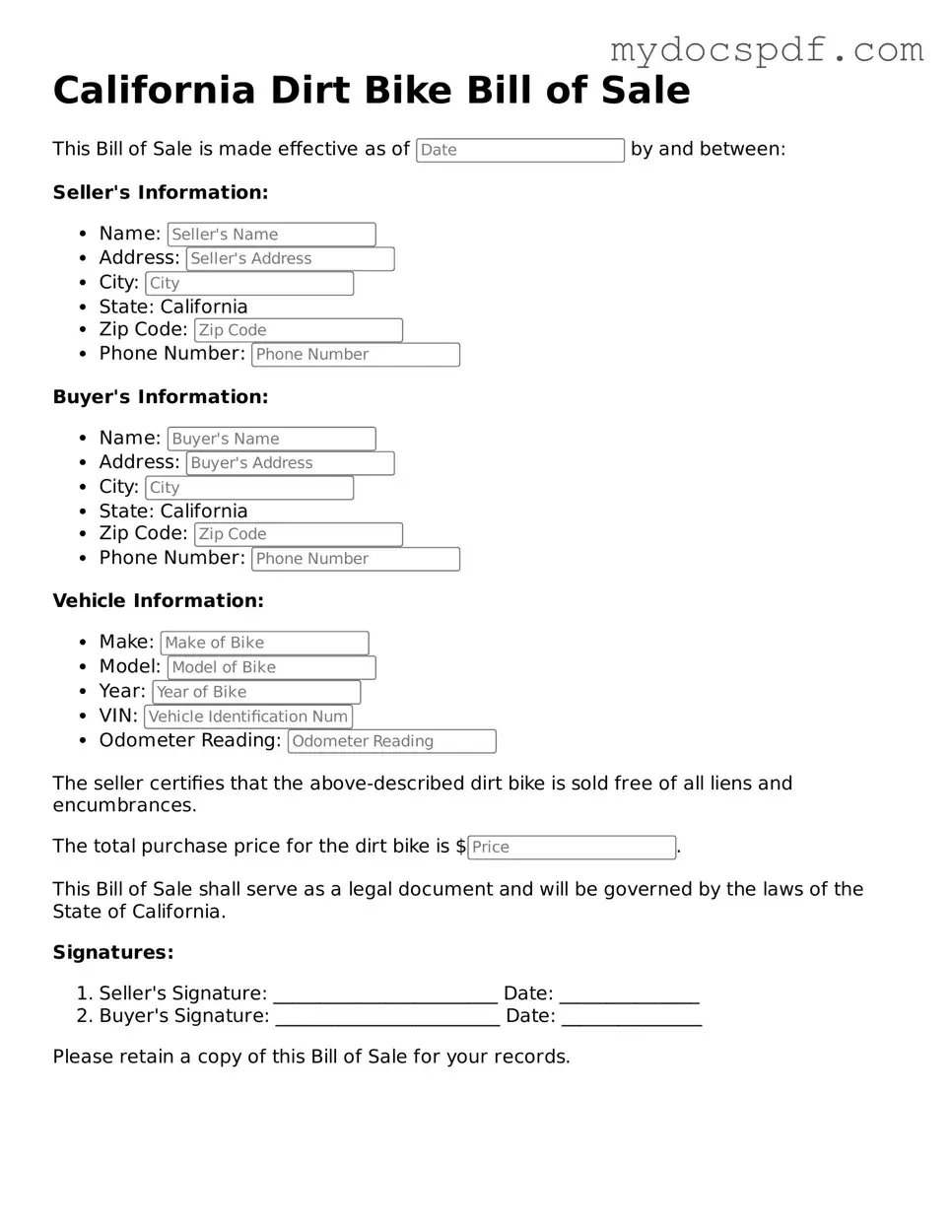Fillable California Dirt Bike Bill of Sale Document
The California Dirt Bike Bill of Sale form is a crucial document that records the transfer of ownership for a dirt bike in California. This form provides essential details about the buyer, seller, and the dirt bike itself, ensuring that both parties have a clear understanding of the transaction. Having a properly filled-out bill of sale can help protect both the seller and the buyer in case of future disputes or issues related to the vehicle.
Access Editor Here
